Stamp #02240
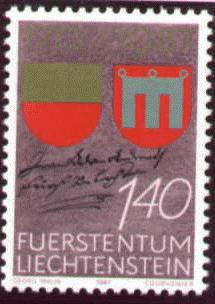
Image online
- Issue date:
- 1920
- Face:
- 10 ct.
- Catalogues:
- Stanley Gibbons: 42; Michel: 39
- Flags shown:
- greater coat of arms of Liechtenstein
Stamp #00903

Image online
- Issue date:
- 1959
- Face:
- 10 ct.
- Catalogues:
- Michel: 381
- Remarks:
- sepia on white paper; flags flying above landscape
- Flags shown:
- Prince of Liechtenstein (1957-?) | Liechtenstein
Stamp #02945
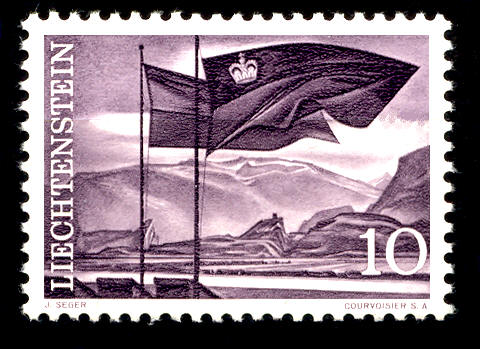
- Issue date:
- 1969
- Face:
- 3.50 Fr.
- Catalogues:
- Michel: 506
- Flags shown:
- greater coat of arms of Liechtenstein
- Image online
Stamp #02239

Stamps outside the FOTW list
Machine stamps series with communal coats of arms and vertical flags (Banner)
Issue date: 1995
Source: Former website from Hans and Maria Rüegg [retrieved]
Vaduz

Text on stamp: The princely hat symbolizes the sovereign residence, the silver church flag is reminiscent of the counts of Werdenberg/Sargans in Vaduz, under whom the foundation for our country's later independence was laid in 1342.
Planken
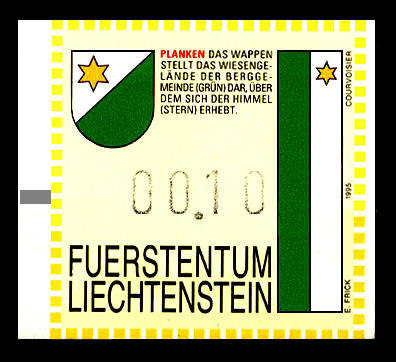
Text on stamp: The coat of arms represents the meadow area of the mountain community (green), over which the sky (star) arches.
Ruggell
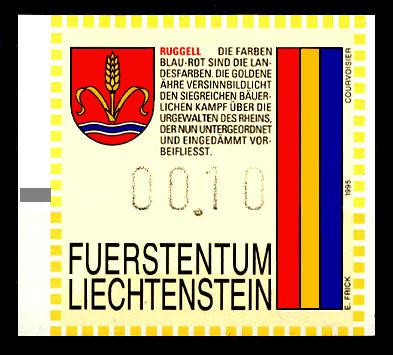
Text on stamp: The colors blue and red are the national colors. The golden ear symbolizes the rural struggle against the elemental forces of the Rhine, which now flows past in a subordinate and dammed manner.
Schaan

Text on stamp: The colors blue and red correspond to the national colors. The ear of corn in the blue field symbolizes agriculture. The silver river in the red field represents the Rhine.
Schellenberg

Text on stamp: The the colors black and gold are reminiscent of the Lords of Schellenberg, the battlements are reminiscent of their castles in the community.
Balzers
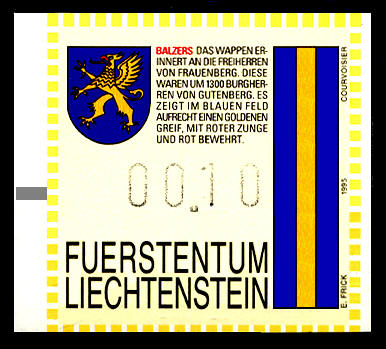
Text on stamp: The coat of arms is reminiscent of the Barons of Frauenberg. Around 1300 they were Lords of Gutenberg. It shows a golden griffin standing upright in the blue field, with a red tongue and red armor.
Eschen

Text on stamp: The silver dove with the bloody wood chip is taken from the coat of arms of the Pfäfers monastery. The Pfäfers monastery held the parish of Eschen until it was abolished (1838).
Gamprin
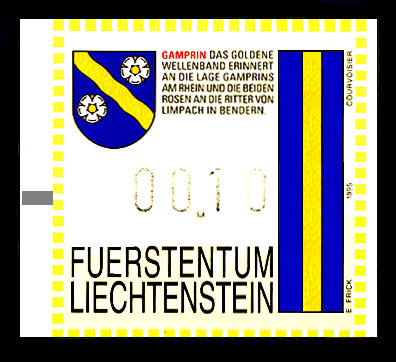
Text on stamp: The golden wavy band is reminiscent of Gamprin's location on the Rhine, and the two roses are reminiscent of the Knights of Limpach in Bendern.
Mauren

Text on stamp: Gold and black are reminders of Mauren's affiliation with the Schellenberg lordship. Key and sword are reminiscent of the patron saint of the parish.
Triesen
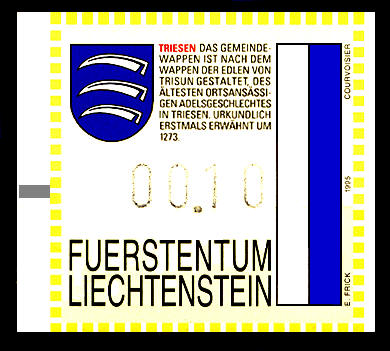
Text on stamp: The municipal coat of arms is designed after the coat of arms of the Nobles of Trisun, the oldest resident noble family in Triesen. Documented for the first time in 1273.
Triesenberg

Text on stamp: The blue and gold colors are reminiscent of the Walser who had immigrated to Triesenberg. The triple mountain alludes to the name Triesenberg. The bell is the symbol of Saint Theodul, the Walser patron.
Martin Karner, 17 January 2023
